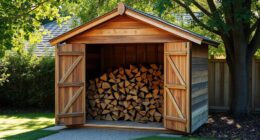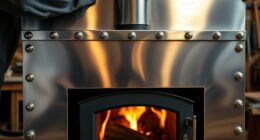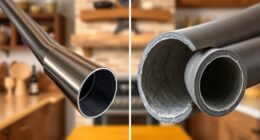As a wood stove owner, I often wonder, “What is the ideal operating temperature for my wood stove?” It is important to find the perfect temperature balance for effective and safe wood burning.
In this article, I will delve into the importance of maintaining the right heat level, factors to consider, and tips for monitoring and controlling the temperature.
So, let’s explore the world of wood stoves and discover how to achieve the perfect heat output for a cozy and effective fire.
Key Takeaways
- The optimal temperature range for efficient wood burning is between 300-500 degrees Fahrenheit.
- Regular monitoring and adjustment of temperature, airflow, and fuel supply are essential for achieving the right heat level.
- Proper ventilation, fuel selection, and well-seasoned hardwoods contribute to better heat production.
- Maintaining a safe and effective heat output requires regular cleaning, inspection, and proper wood stove maintenance.
The Importance of Optimal Temperature for Wood Stoves
I find it crucial to maintain the optimal temperature for my wood stove. Not only does it ensure efficient heating, but it also offers several benefits.
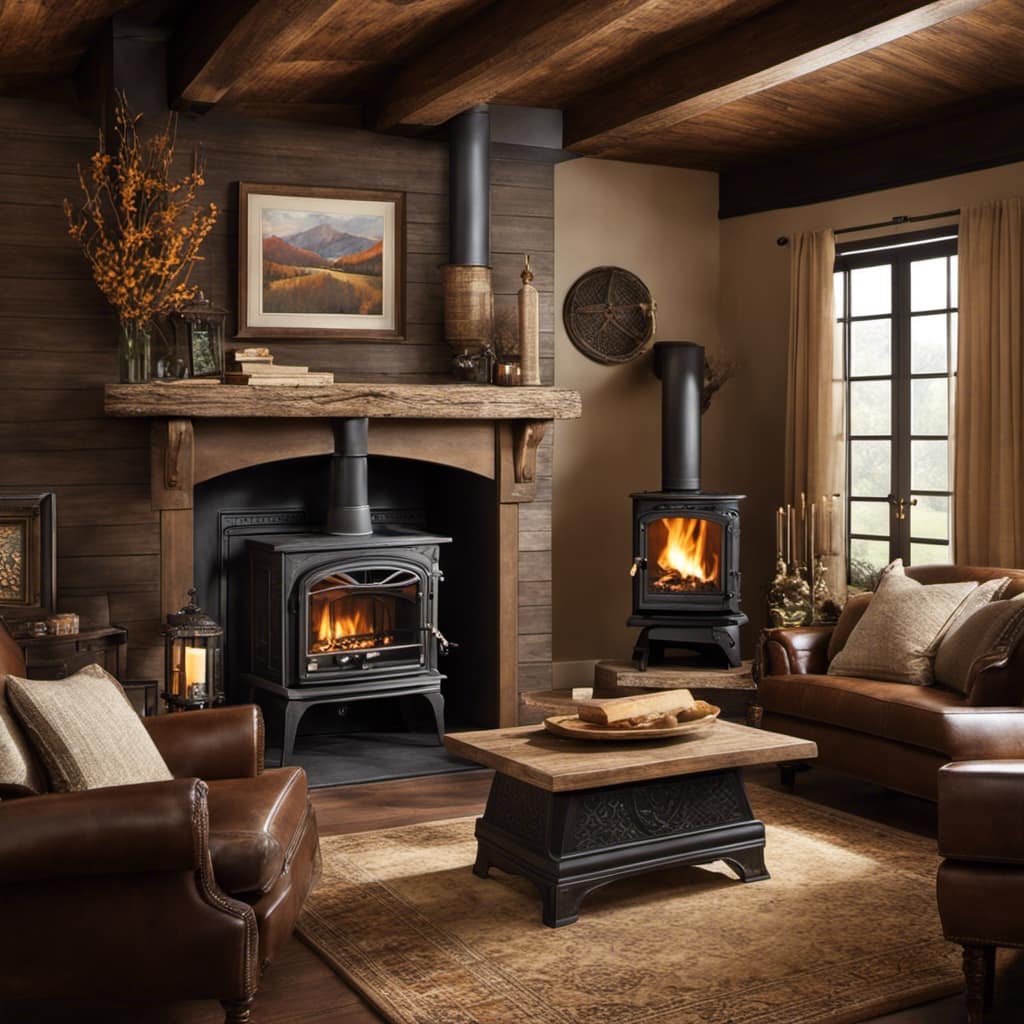
Firstly, using a wood stove can significantly reduce heating costs, as wood is generally cheaper than other fuel sources. Additionally, wood stoves provide a cozy and inviting atmosphere, perfect for winter evenings.
To achieve the optimal temperature, it’s important to properly season firewood. This process involves cutting the wood into proper lengths and allowing it to dry for at least six months. Seasoned firewood burns hotter and produces less smoke, resulting in a more efficient and cleaner burn.
Understanding the Temperature Range for Efficient Wood Burning
In order to burn wood efficiently, it’s important to understand the temperature range for optimal performance. Here are four key points to consider:
Wood stove maintenance: Regularly cleaning your wood stove is crucial for efficient burning. Remove ashes and debris to ensure proper airflow and prevent blockages that can impede heat production.
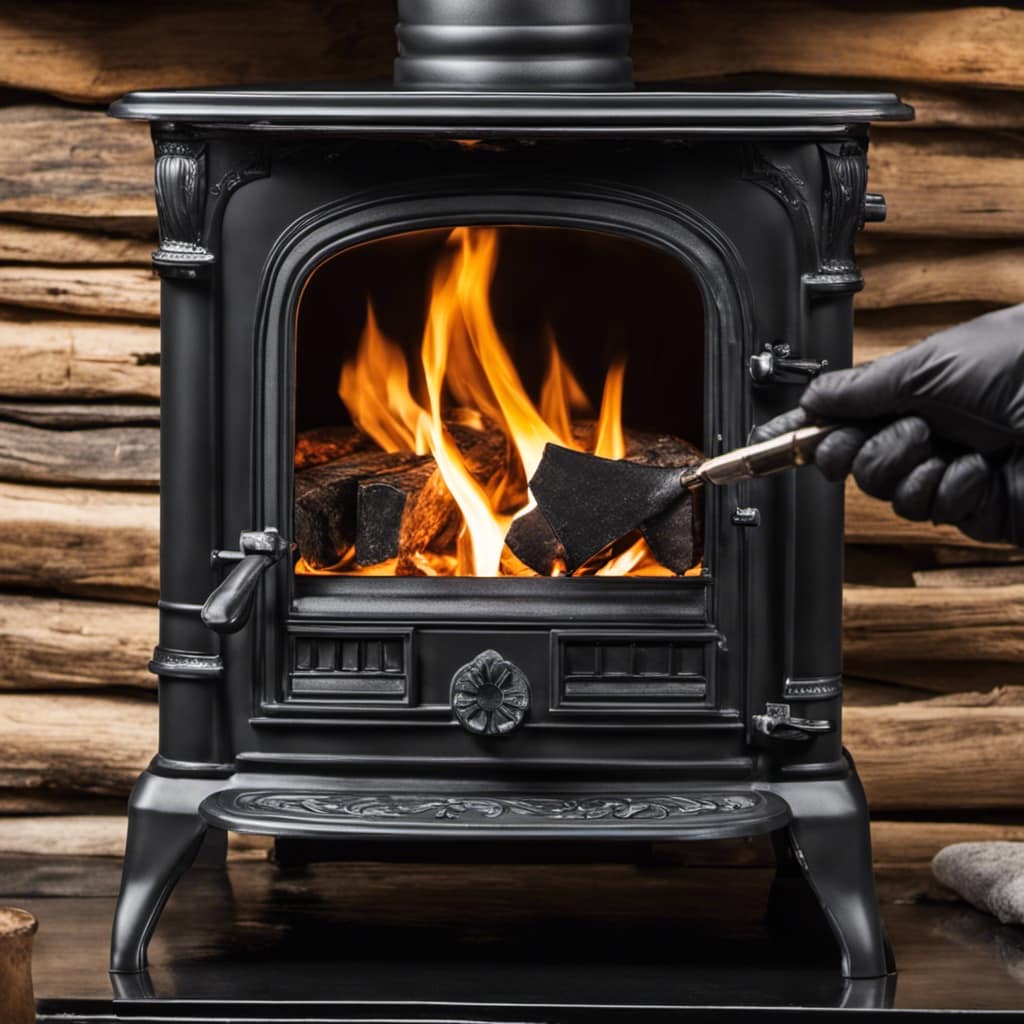
Proper wood stove ventilation: Adequate ventilation is essential for maintaining the right temperature. Make sure your stove is installed with the appropriate clearance to combustible materials and that the flue is clear of any obstructions.
Temperature control: Monitoring the temperature inside your wood stove is essential. Aim for a range of 300-500 degrees Fahrenheit for efficient combustion, ensuring complete burn and minimal smoke emissions.
Fuel selection: Choosing the right type of wood is important. Hardwoods like oak and maple burn hotter and longer, providing more heat and efficiency compared to softwoods.
Factors to Consider in Achieving the Right Heat Level
Achieving the right heat level is crucial for efficient wood burning and can be influenced by factors such as proper ventilation, temperature control, and fuel selection. Ensuring that your wood stove reaches and maintains the optimal heat level is essential for effective heat distribution and fuel consumption. To achieve this, it is important to consider the following factors:
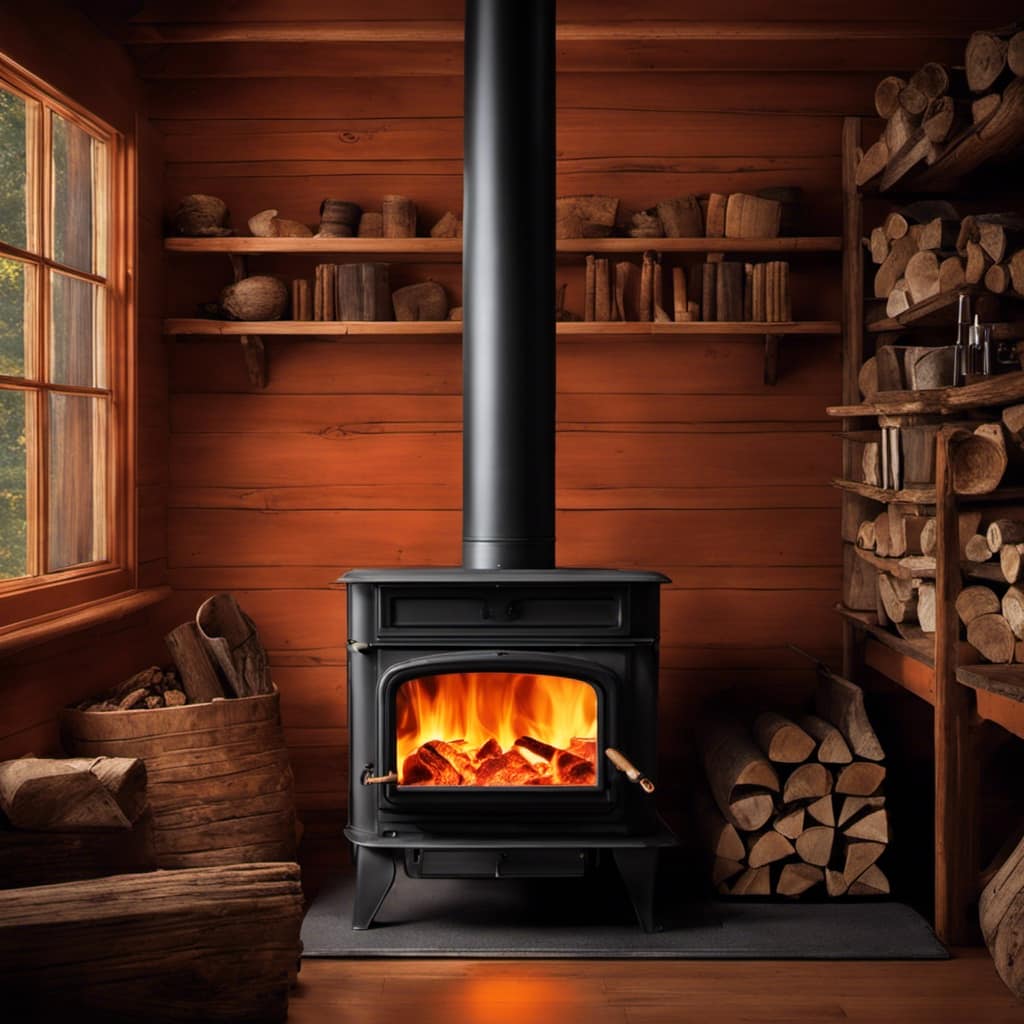
| Factor | Description | Importance |
|---|---|---|
| Ventilation | Proper airflow is necessary to maintain the desired heat level. | High |
| Temperature Control | Monitoring and adjusting the temperature is key to achieving the right heat level. | High |
| Fuel Selection | Using well-seasoned hardwoods can result in better heat production and longer burn times. | Medium |
Monitoring and Controlling the Temperature of Your Wood Stove
To effectively monitor and control the temperature of my wood stove, I need to regularly check the thermometer and make adjustments as necessary.
Here are four key steps I follow to ensure optimal temperature control:
Check the thermometer: I rely on a high-quality thermometer placed near the stove to accurately measure the temperature. This helps me keep track of the heat level and make informed decisions.
Observe the airflow: Proper airflow is crucial for maintaining the desired temperature. By adjusting the damper and air vents, I can control the amount of oxygen entering the stove, which directly affects the heat output.
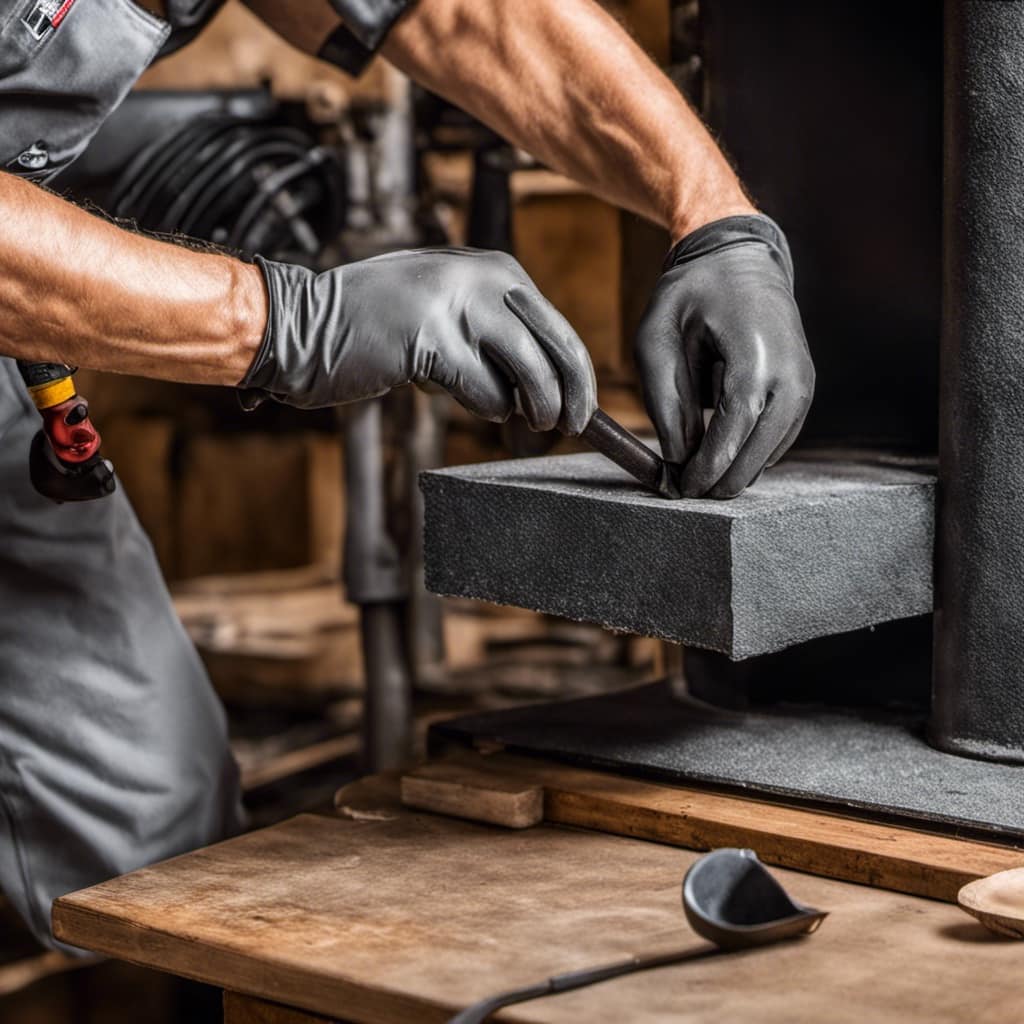
Adjust the fuel supply: The type and quantity of fuel used greatly impact the stove’s temperature. I carefully add or remove wood to maintain a steady burn rate and achieve the desired heat level.
Make small adjustments: Monitoring the thermometer closely allows me to make small, incremental changes to the airflow, fuel supply, or damper as needed. This helps me achieve precise temperature control.
Tips for Maintaining a Safe and Effective Heat Output From Your Wood Stove
I always prioritize safety by regularly inspecting and cleaning the chimney to ensure optimal heat output from my wood stove. Proper maintenance is crucial for the safe and effective operation of a wood stove. Here are some tips for maintaining your wood stove:
| Tips for Proper Wood Stove Maintenance | Signs of an Overheating Wood Stove |
|---|---|
| Clean the chimney regularly to prevent the build-up of creosote, which can lead to chimney fires. | Excessive heat emanating from the stove, causing damage to the surrounding walls or floor. |
| Inspect the stove for any cracks, leaks, or damaged parts, and repair or replace as necessary. | Smoke or unusual smells coming from the stove. |
| Keep the stove and surrounding area clean and free from combustible materials. | Excessive smoke or soot buildup in the stove or chimney. |
| Use only dry, seasoned wood to ensure efficient burning and reduce the risk of creosote buildup. | Increased frequency of the stove’s automatic shut-off due to overheating. |
What Are the Potential Risks of Exceeding the Ideal Temperature for a Wood Stove?
Exceeding the ideal temperature for a wood stove can pose several risks such as igniting a chimney fire, damaging the stove or flue, and even causing a house fire. Keeping the wood stove within the recommended temperature range is crucial for safety and optimal performance.
Frequently Asked Questions
What Are the Potential Dangers of Operating a Wood Stove at Temperatures Above the Recommended Range?
Operating a wood stove at temperatures above the recommended range can pose fire hazards and cause damage to the stove components. It is important to ensure that the stove operates within the specified temperature range to prevent these potential dangers.
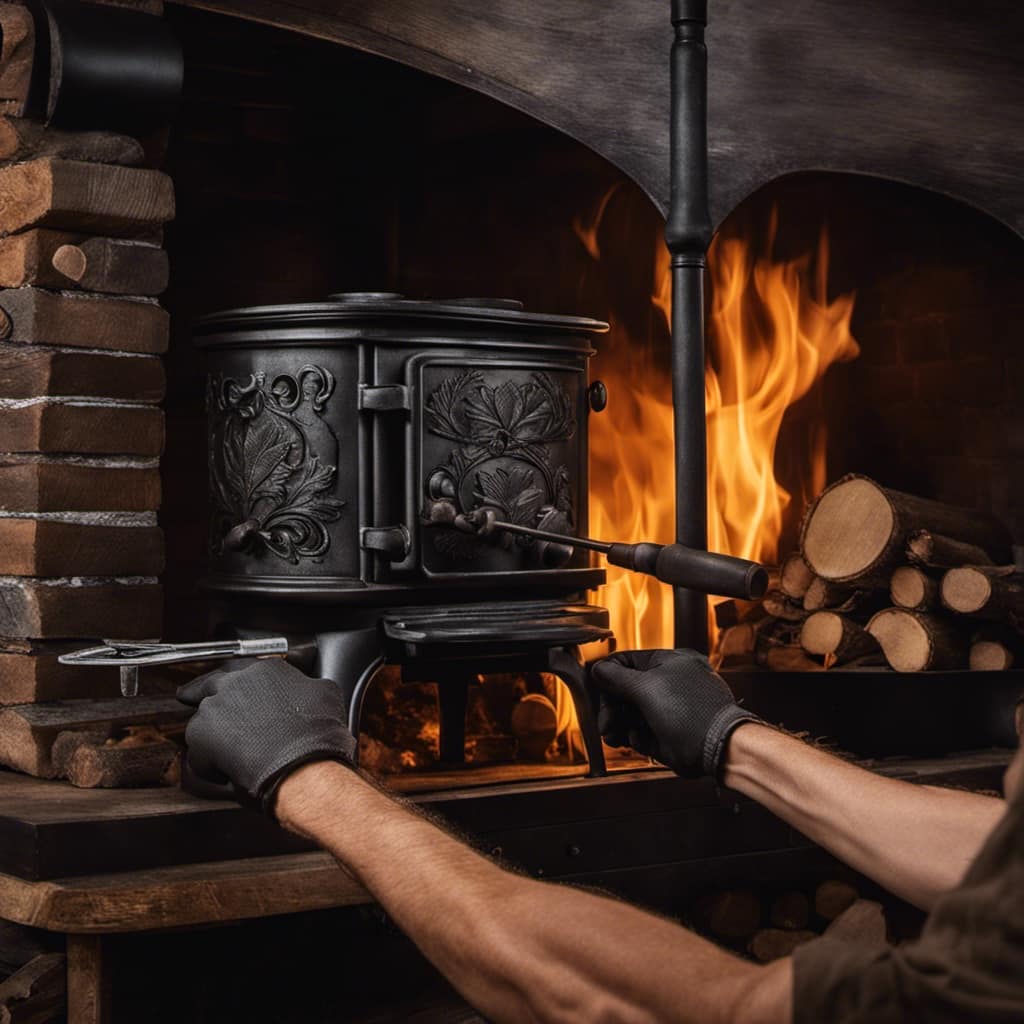
Can I Use a Wood Stove for Cooking or Heating Water?
When using a wood stove, it’s important to consider how it can be used for more than just heating. Cooking techniques and alternative heating methods are viable options, but let’s first address the stove’s optimal temperature.
How Does the Size and Type of Wood Affect the Temperature of My Wood Stove?
The size and type of wood you use in your wood stove can greatly affect its temperature. Wood with higher moisture content will burn less efficiently, resulting in lower temperatures.
Are There Any Ways to Increase the Heat Output of My Wood Stove Without Exceeding the Optimal Temperature Range?
To increase the heat output of my wood stove without exceeding the optimal temperature range, I can adjust the air intake, use dry and seasoned wood, and keep the stove clean for efficient heat transfer. Temperature control is key.
What Are the Signs That My Wood Stove Is Operating at Too Low of a Temperature?
If my wood stove is operating at too low of a temperature, it can lead to low temperature efficiency and increased maintenance requirements. Signs include difficulty in starting a fire and incomplete combustion.
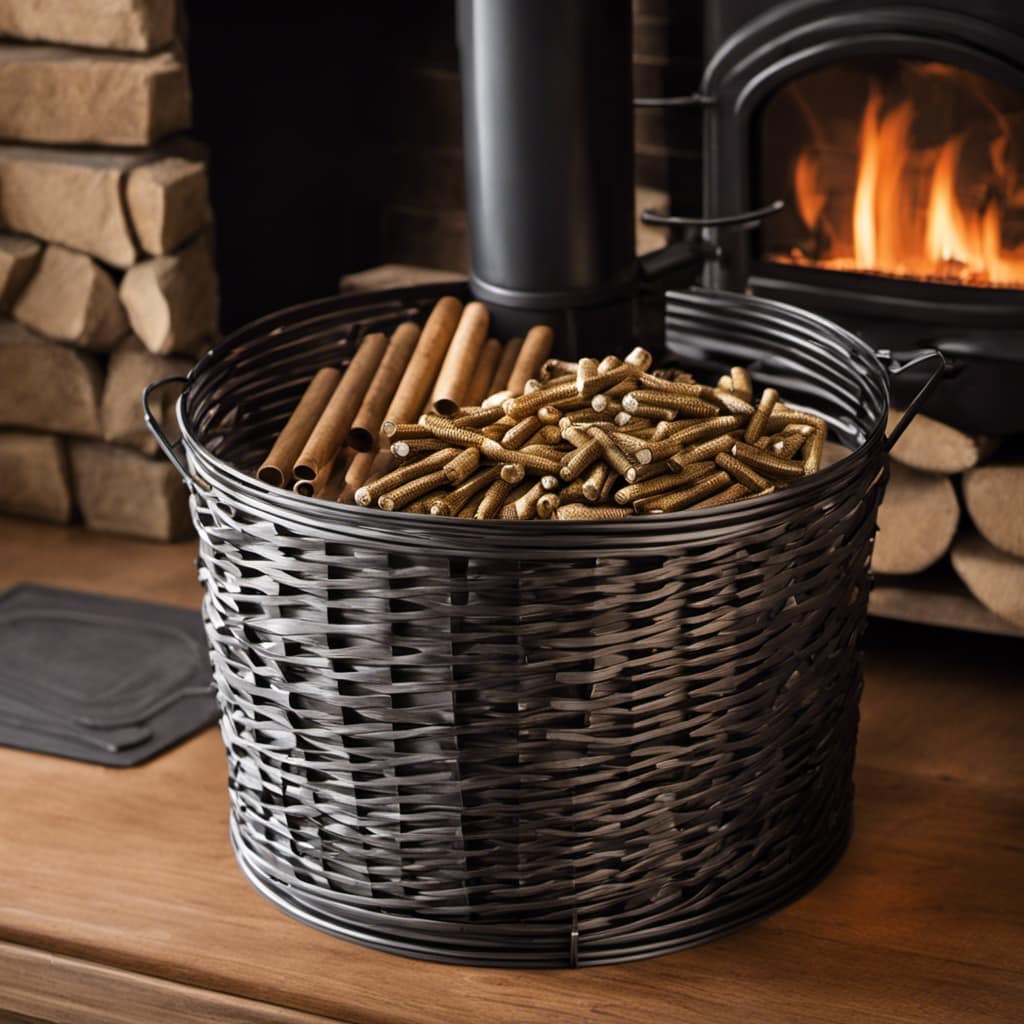
Conclusion
In conclusion, finding the optimal temperature for your wood stove is crucial for efficient and effective heat output.
By understanding the temperature range, considering various factors, and monitoring and controlling the heat, you can ensure a safe and enjoyable wood burning experience.
Remember, maintaining the right heat level not only keeps you warm but also creates a cozy atmosphere that evokes feelings of comfort and contentment.
So, keep your wood stove hot and your home cozy!
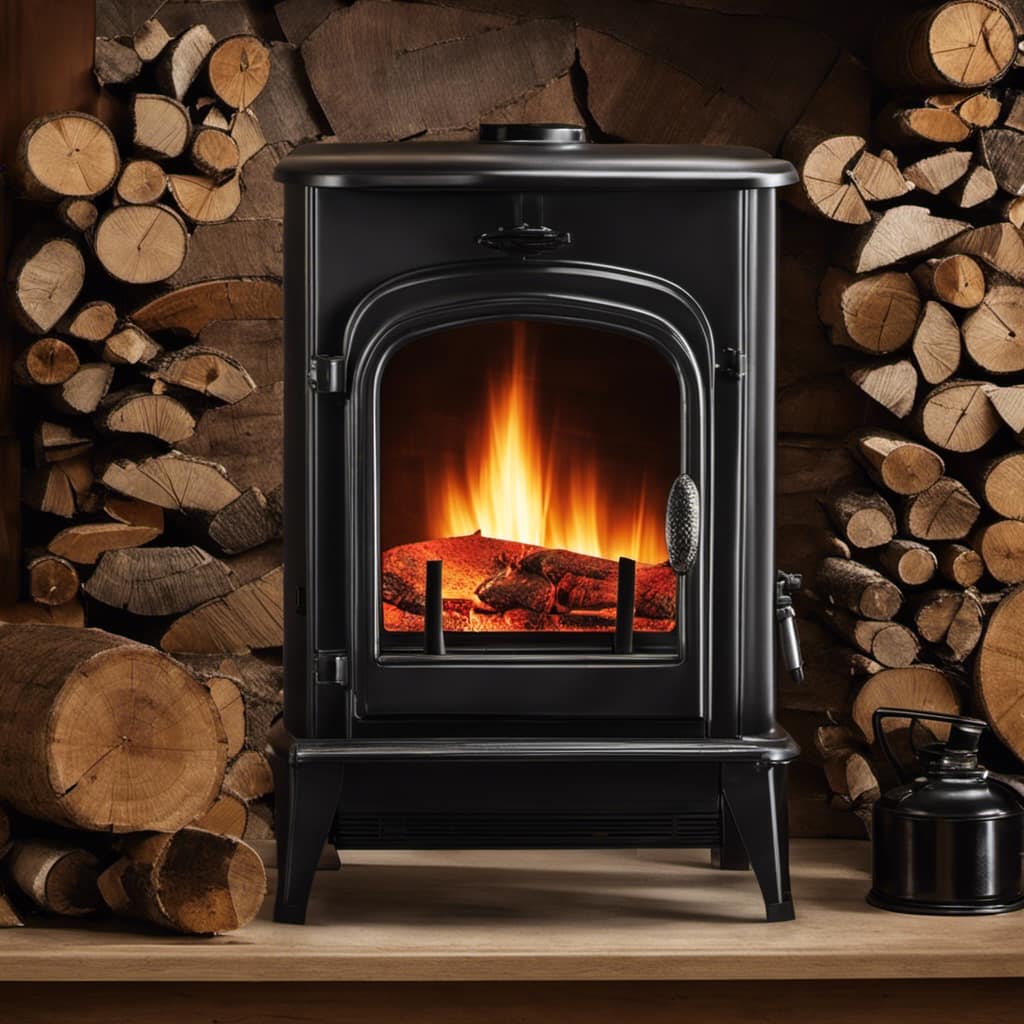
Growing up surrounded by the vast beauty of nature, Sierra was always drawn to the call of the wild. While others sought the comfort of the familiar, she ventured out, embracing the unpredictable and finding stories in the heartbeat of nature.
At the epicenter of every remarkable venture lies a dynamic team—a fusion of diverse talents, visions, and passions. The essence of Best Small Wood Stoves is crafted and refined by such a trio: Sierra, Logan, and Terra. Their collective expertise has transformed the platform into a leading authority on small wood stoves, radiating warmth and knowledge in equal measure.









